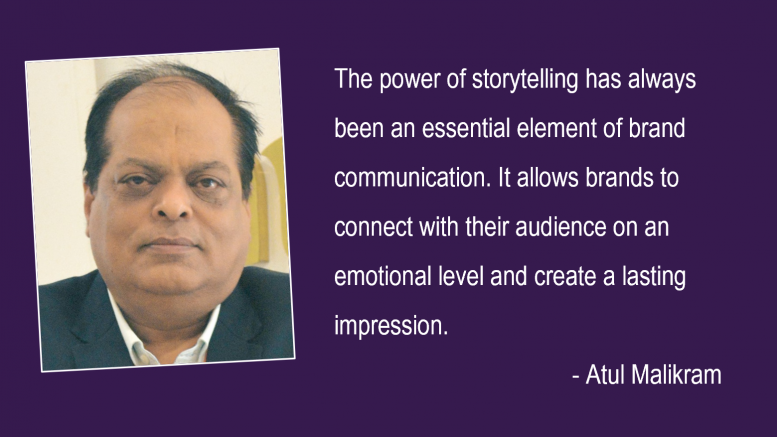Storytelling has always been a key strategy in brand communication, affecting corporate culture, brand philosophy, and lifestyle attitudes. In this era of new age technologies, Artificial Intelligence (AI) becomes more and more prevalent, It is important to establish a balance between AI and human values in order to provide maximum exposure to the brand. What will the story landscape look like in the future if AI becomes the sole leader of writing? Although it has been speculated that AI will be able to outperform humans in all tasks within the next few years, when it comes to communication… It remains to be seen whether a machine can replace the “human touch” and produce a narrative with the same thought and care as a communication professional.
The power of storytelling has always been an essential element of brand communication. It allows brands to connect with their audience on an emotional level and create a lasting impression. In the age of AI, the story-telling has become more powerful and dynamic. AI is enabling brands to understand the behavior and preferences of their audience, and create stories that are more engaging and relevant.
The need for a human touch in storytelling in the age of AI.
Mary Shelley once said, “The greatest challenge of the 21st century is the reconciliation of artificial intelligence with human values.” challenge is not about creating content; the challenge is to infuse human emotions and empathy into the content, creating an “emotional touch” between the brand and its audience.
Since ancient times, storytelling has been used to establish connections and evoke powerful feelings. Stories compel people to take actions that they might not otherwise take. Communicators use this advantage to make their audiences resonate with their brand. Brand stories delve deeper into the consciousness of their target audience to strengthen their emotional connection with the brand. The stories are often subjective and relatable, with the potential to create empathy among the audience.
AI is undoubtedly changing the process of communication and performs tasks much more efficiently than humans, but it cannot replace emotional intelligence, personal connection, and subtle communication that are often essential in industries such as customer service, sales, and marketing. Algorithms can efficiently deduce information from past creations and predict the stories. But they lack human creativity when it comes to critical thinking. Machine learning algorithms rely heavily on data to identify patterns but they can’t replicate the emotional touch that is the heart of the storytelling. It is also important to remember that AI-generated material often lacks the necessary qualifications or appropriate citations that content created by experienced experts can provide. Furthermore, AI cannot grasp feelings and emotions in the same way as real, living creatures. Consequently, it is unable to express or evoke specific emotions when generating content. Machine-generated copy is often viewed as dull, unappealing, and inauthentic by the public. It is difficult to create a genuine connection with your target audience when using this type of content.
The challenges of AI and storytelling
While AI has the potential to revolutionise storytelling, there are also significant challenges that must be addressed. One of the biggest challenges is the risk of algorithmic bias. If the data used to train AI algorithms is biased, then the algorithm will also be biased. This can lead to AI-generated stories that perpetuate harmful stereotypes or reinforce existing biases.
Another challenge is the loss of human creativity and intuition. While AI algorithms can generate stories and characters, they lack the human intuition and creativity that is essential to great storytelling. AI-generated stories may be technically impressive, but they may lack the emotional depth and nuance that makes a story truly great.
Conclusion
Overall, the collaboration between humans and AI in storytelling can help to enhance and improve accuracy and consistency; create more representative and diverse stories, and open doors to new ways of storytelling. It is important to note, however, that the role of AI in storytelling is still evolving, and there are potential ethical and creative challenges that need to be carefully considered and addressed.
The rise of AI is transforming the way we consume and create stories. AI algorithms are creating more personalised and interactive storytelling experiences, and they are capable of generating stories and characters automatically. However, there are also significant challenges that must be addressed, including the risk of algorithmic bias and the loss of human creativity. As AI continues to advance, it will be essential to find a balance between the technical capabilities of AI and the human intuition and creativity that is essential for great storytelling.
The views and opinions published here belong to the author and do not necessarily reflect the views and opinions of the publisher.



Be the first to comment on "Storytelling in the Age of AI"